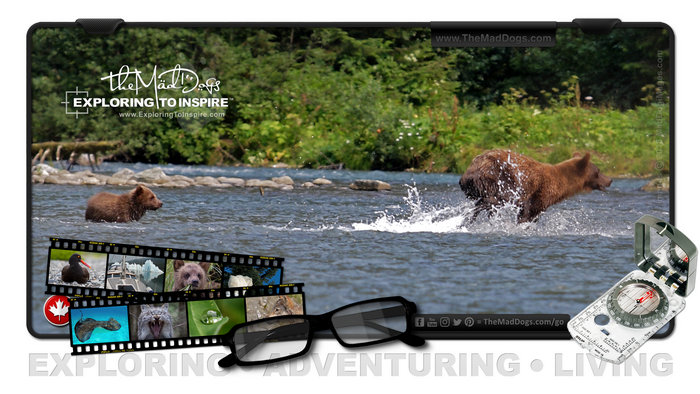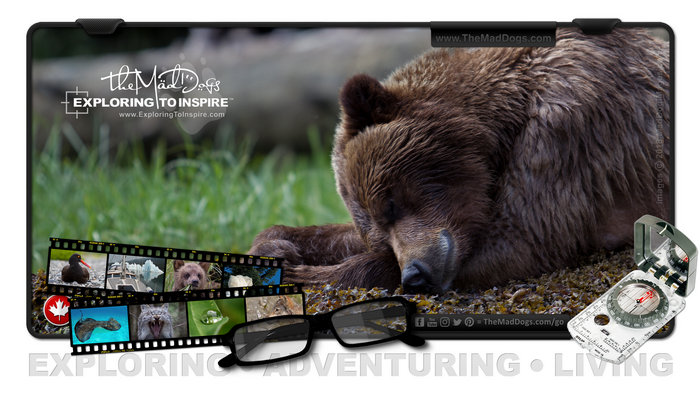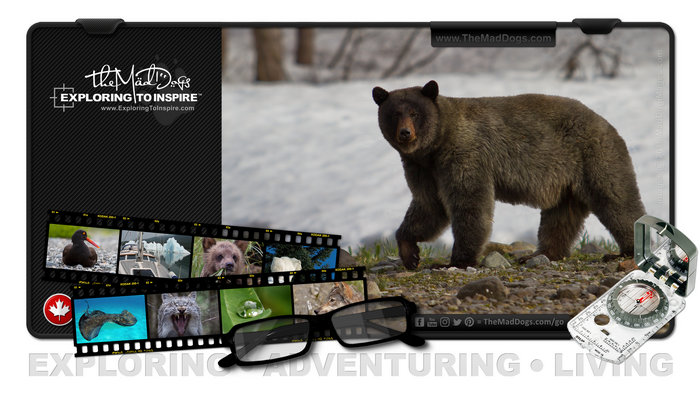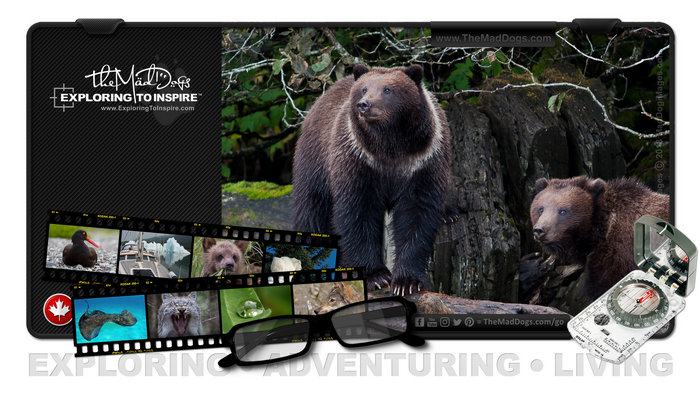Welcome to Canadian Wildlife
--
The
wild side of Canada™ |
Copyright notice: All text, layout,
images and graphical representations are copyright ©
2010
Mad Dog
Digital and may not be copied, reproduced or
transmitted without the written consent of
Mad Dog
Digital. Please contact us for more
information |
|
|
|
|
Details about:
Grizzly
Bears (Brown bear) in Canada & Alaska (USA) |
| |
 The
Grizzly/Brown bear The
Grizzly/Brown bear
The Grizzly Bear (or Alaskan Brown Bear in Alaska)
symbolizes mountain wilderness. Standing large and
impressive, coastal Grizzly Bears are an imposing
sight.
Measuring 39” (1 m) tall at the shoulder, over 9 ft
(2.7 m) when standing on their hind legs and
weighing in at an impressive 1,200 lbs (560 kg),
coastal Grizzly Bears are the largest member of the
Grizzly Bear family and the 2nd largest land
carnivore in North America. In the coastal regions
where salmon is the primary food source, the Grizzly
Bear is referred to as a Brown Bear however they are
technically still Grizzly Bears.
Grizzlies are distinguished by the large hump above
their shoulders and their flattened conical shaped
face. The large hump is actually a great mass of
muscle used to power the incredibly strong front
paws. Grizzly front paws measuring up to 5” - 7” (12
cm - 17 cm) long and are capped by the more
remarkable 4” (10 cm) long claws! These incredibly
strong paws and claws are used to move rocks and dig
in the earth searching for roots and insects.
Although the muscle mass above the shoulders
provides amazing strength, it is also a hindrance to
the grizzly and slows it down when it is running
downhill. |
| |
 |
| |
Although lacking a visible muscle mass, it is the
powerful hind legs, with paws measuring up to 12”
(30 cm) long that are able to support the entire
weight of the Grizzly when standing on two legs.
Grizzlies can be seen standing up and even walking
short distances as they look around taking in their
surroundings.
The average Grizzly Bear territory is over 1,500 sq
miles (4,000 sq km) with the preference being open
country and valley bottoms. Grizzlies appear to be
slow movers, lumbering along, swinging their head
side-to-side, however they are powerful runners
capable of running at speeds up to 35 mph (50 km/h).
Being primarily nocturnal, they cover amazing
distances travelling under the cover of darkness.
|
 |
| |
| Grizzlies are thought of as being strictly
carnivores, but they are actually omnivores with up
to 90% of their diet coming from vegetable sources
including berries and roots, which they dig for
using their strong front legs. In the coastal
regions, Grizzlies consume large quantities of
salmon. Standing in the middle of a salmon spawning
stream, Grizzlies wait patiently watching and
waiting for salmon to jump upstream. Once a salmon
is airborne, the grizzly will catch them mid-air
snatching them between their teeth. Alternatively,
they’ve been seen “Bobbing for Salmon”, pinning the
salmon underwater, plunging their face in the
running stream and coming up with their dinner in
their jaws. |
| |
 |
| |
It is this plentiful supply of salmon that will
sometimes bring dozens of otherwise solitary Grizzly
Bears together in close proximity to each other. As
the food supply is so grand they generally tolerate
each other well, however occasionally vicious fights
will break out.
It is believed that Grizzlies do not enter a true
hibernation, instead entering what is termed a
“false hibernation”. During false hibernation, the
bear may wake and walk around outside during the
winter. In preparation for this false hibernation,
grizzlies may gain up to 400 lbs (180 kg) in order
to fuel their sleepy bodies during the winter. Where
food is plentiful and weather extremes are not as
severe, some grizzlies do not hibernate at all. |
| |
 |
| |
| Pregnant female grizzly bears usually give birth to
a litter of 2 cubs, born between January and March,
coinciding with winter break up. When born, the cubs
are tiny, weighing only 1 lb (450 gr) and are
completely reliant on their mothers. These cubs
usually remain with their mother for two years and,
depending on ecological conditions, it may be an
additional 3 years until she mates again. The
average grizzly has a lifespan of 15 - 25 years. |
| |
 |
| |
Grizzly Bears in Canada & Alaska are a sight to see.
While most are colored brown, they range from white
to black and are even know to have a “blue phase”
when their fur appears to be a silvery blue color.
Return to our main animals in
Canada page |
| |
 |
| |
| |
 |
| |
|
|
|



